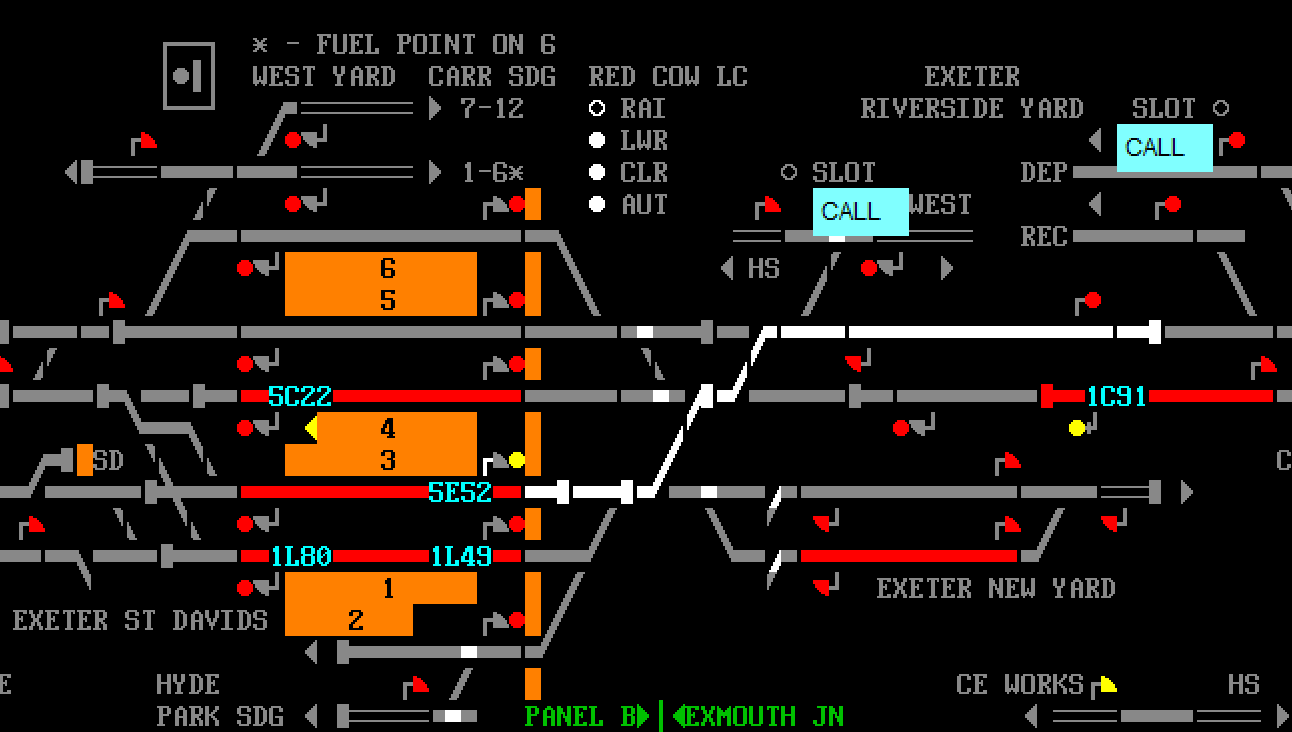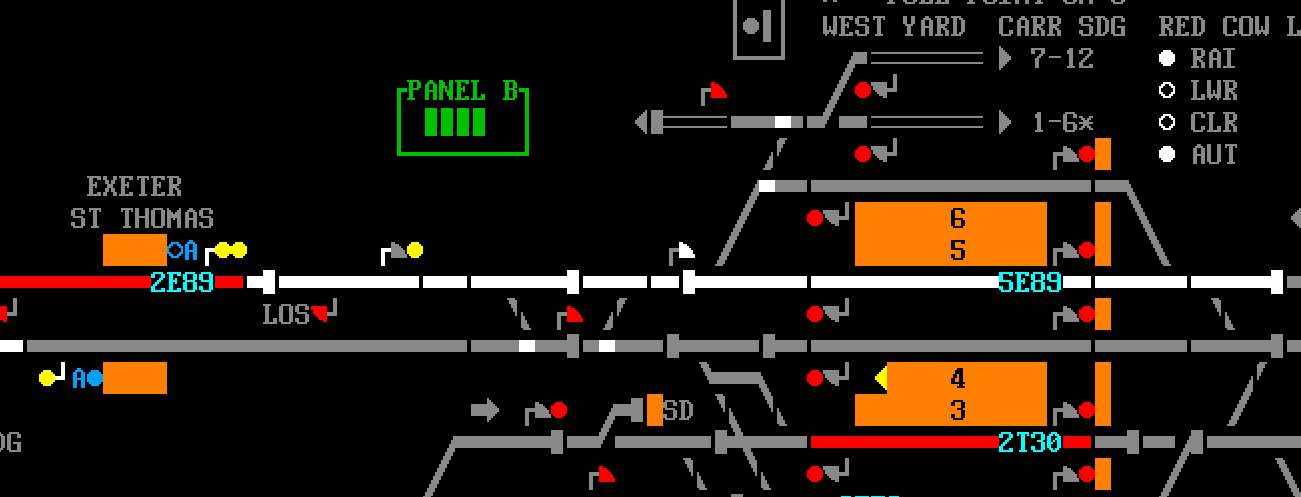Page 1 of 1
| Interposing and shifting behaviour 12/01/2025 at 19:02 #159900 | |
|
M'vy
13 posts |
Hi, I've got more newbie question that running my first 24h sim did not quite answer. I'm trying to figure out more of how interposing and shifting of Train Describers (TD) works. The easy bit: - Interposing over and train in it's current berth changes the TD - Interposing over a further signal for an anonymous train (red line), "picks up" the TD when passing - I believe the 2nd behaviour also works when the train is undescribed "****" Now, as I've progressed, I've tried to get better at updating/placing TD early. When I've got a train stopping at a bi-directional platform, AND the train is due to depart from the same side (reverse direction), I found out that interposing on the entry signal (the one that becomes the exit signal after the reverse), makes the train pick up the new TD (figure 1). However, it seems that the same is not true when the train exit on the other side (does not change direction) and I have interposed at the exit signal (figure 2 + 3), which I think is consistent when trying to interpose a signal when the train already has a TD. I assume this is a protection to avoid picking up a wrong TD that would be hanging around. Speaking of hanging around, it seems that sometimes, some TD do not follow trains. I think I've mainly seen this when shunting. For example in Exeter St David's, reversing from platform 5 to the Limit of Shunt (LOS) then driving into the sidings can sometimes leave a TD on a grey line. I think this happens when the train do not fully reverse up to the full extend of the reservation (in this example next to the LOS signal). I have to manually cancel this TD. I seem to also have realised that some shunt movement seems to cancel TD and revert the train to anonymous, but I'm not sure on what condition this was. Is this only due to segment without a berth? or is shunting inherently killing my TD? If it is the former, is there anyway to know which section have and don't have a berth? Thanks!    Post has attachments. Log in to view them. Log in to reply |
| Interposing and shifting behaviour 12/01/2025 at 21:05 #159902 | |
|
Steamer
4032 posts |
In your first figure, you'll be setting the route for 1L80 from E160. As the 1L80 description is in E180's berth, it will 'step' when the train departs to the TD berth of the signal to which the route is set. If you only had a description at the other end (i.e. in E437's berth), when you set a route from E160 and that signal clears, the description at E437 would move to E160, then step to the next signal as described above. This is one of the very few times the train describer has additional logic beyond straight stepping and overwriting. In your second example, you're signalling 2E89 into an empty platform, and the description will indeed overwrite whatever's in E37's berth when the train passes E35. The exception would be if you were to bring it into an occupied platform- for example P3. In that case the describer would step to the near end berth (E260) on the assumption that there was another train described further along. Again though, were E260's berth already have a description in it, this would simply be overwritten. As a rule of thumb shunt signals do not have TD berths; this isn't remotely a hard-and-fast rule and it's something you'll get a feel for in different simulations. Whether or not the description is removed from the first signal depends on whether the assumption was made at the design stage that the movement was a full train or just the loco off a train. In the latter case the loco wouldn't have a description interposed at all and the main train description simply left in the berth. "Don't stress/ relax/ let life roll off your backs./ Except for death and paying taxes/ everything in life.../ is only for now." (Avenue Q) Last edited: 12/01/2025 at 21:06 by Steamer Reason: None given Log in to reply The following user said thank you: M'vy |
| Interposing and shifting behaviour 15/01/2025 at 20:21 #159943 | |
|
Red For Danger
182 posts |
Smething that can trip up new users of Simsig is when shunt moves from shunt signals lead to a loss of a TD number. It makes keping track of what is where and what the next move is for it's timetable difficult, so what I do is create a sticky note that has the TD written on it, and when I signal a move, I move the stickynote to the location where the train will stop to reverse or wait it's next move. By having the TD on the sticky note, you can click on it at anytime and it will open the timetable window to let you know what happens next. It saves having to keep on interposing the TD for every move. Hope that helps. Log in to reply The following user said thank you: M'vy |